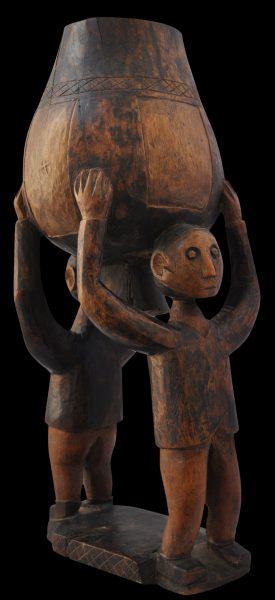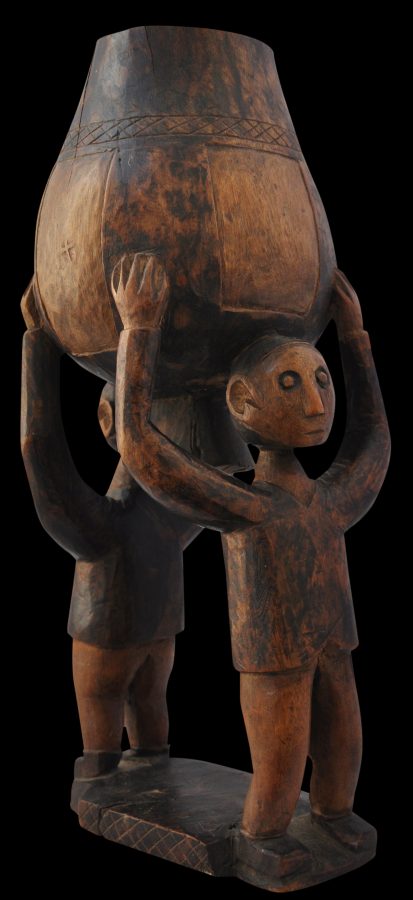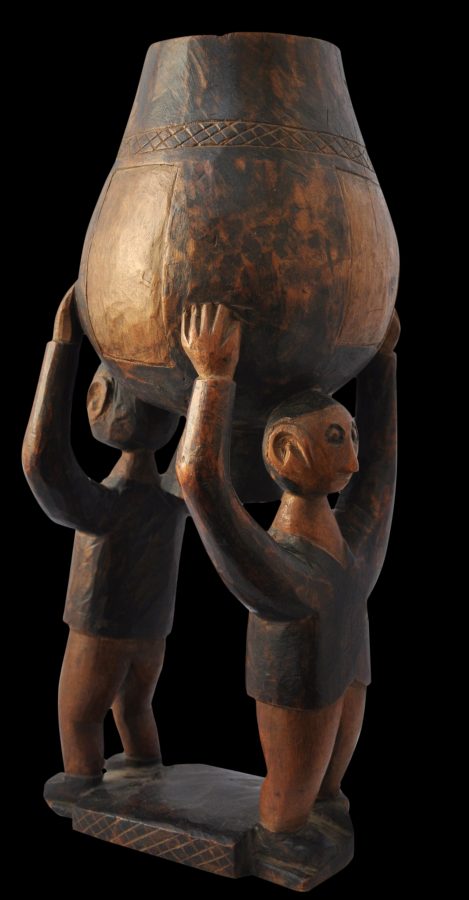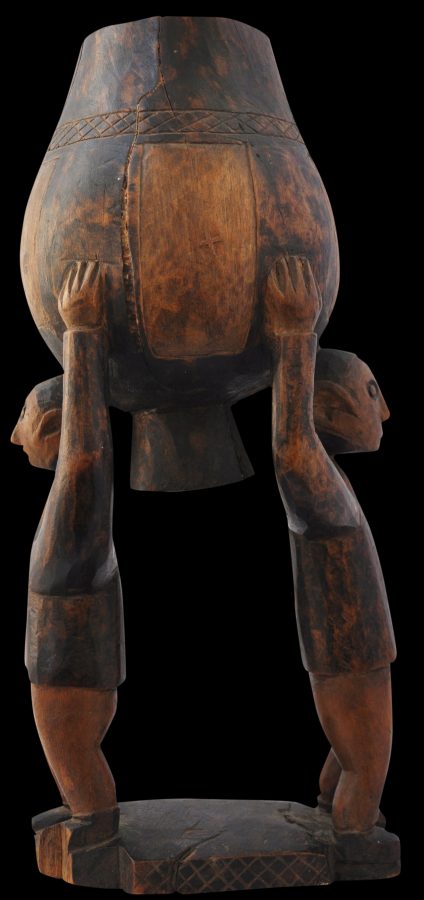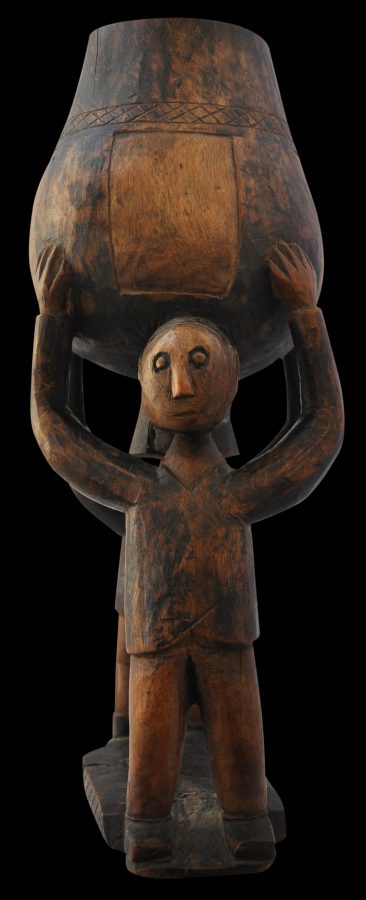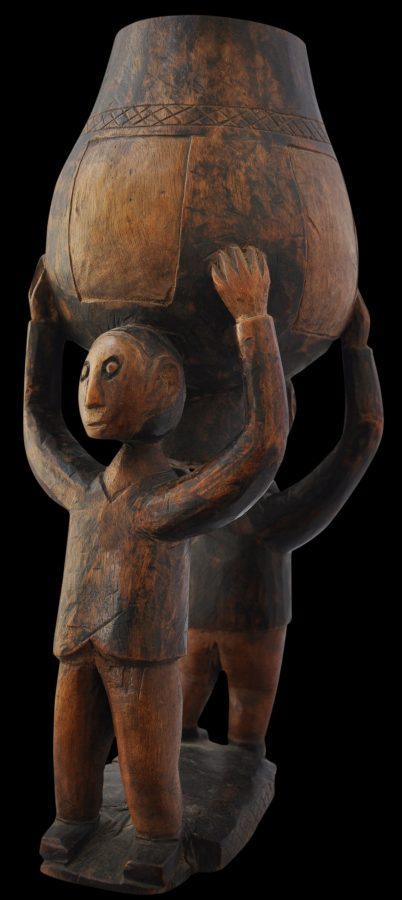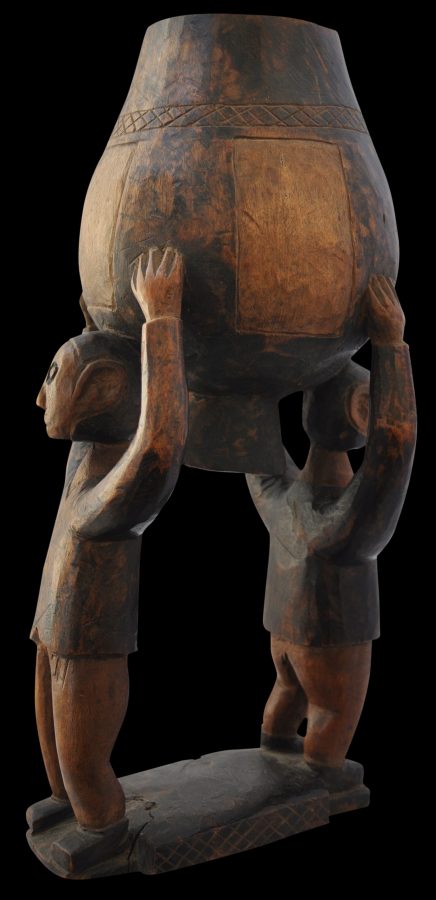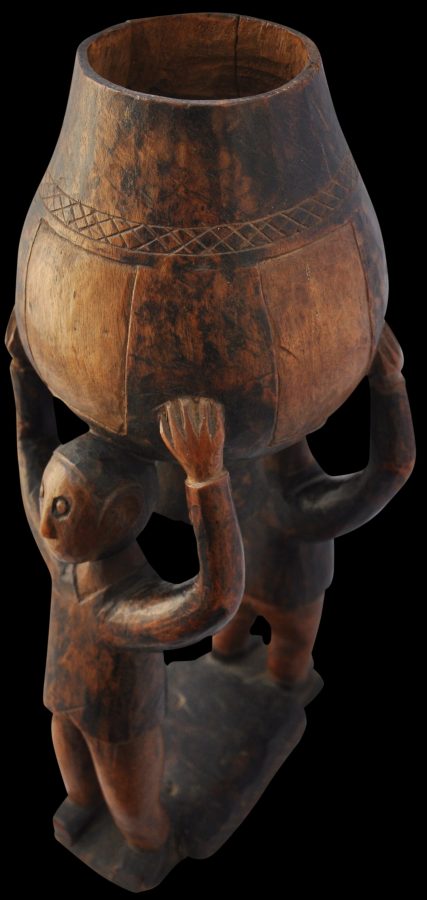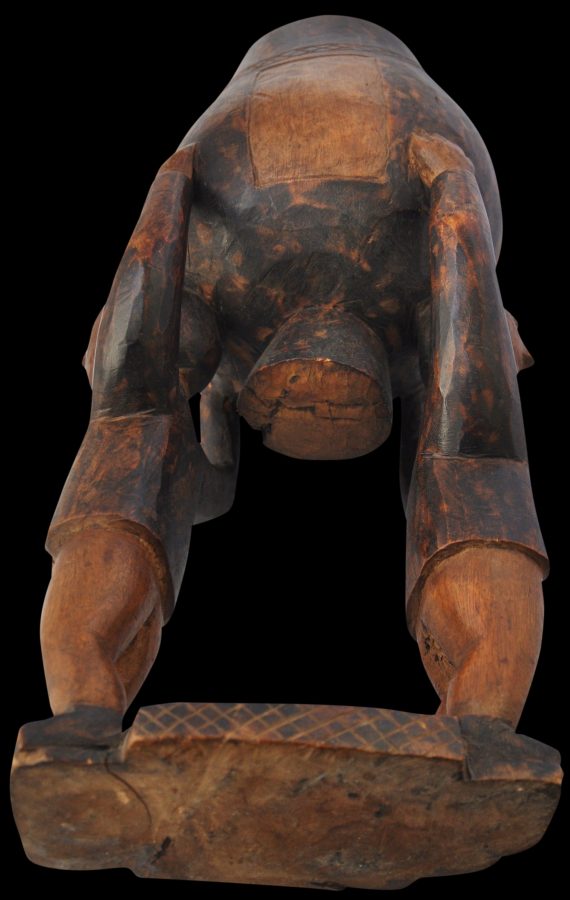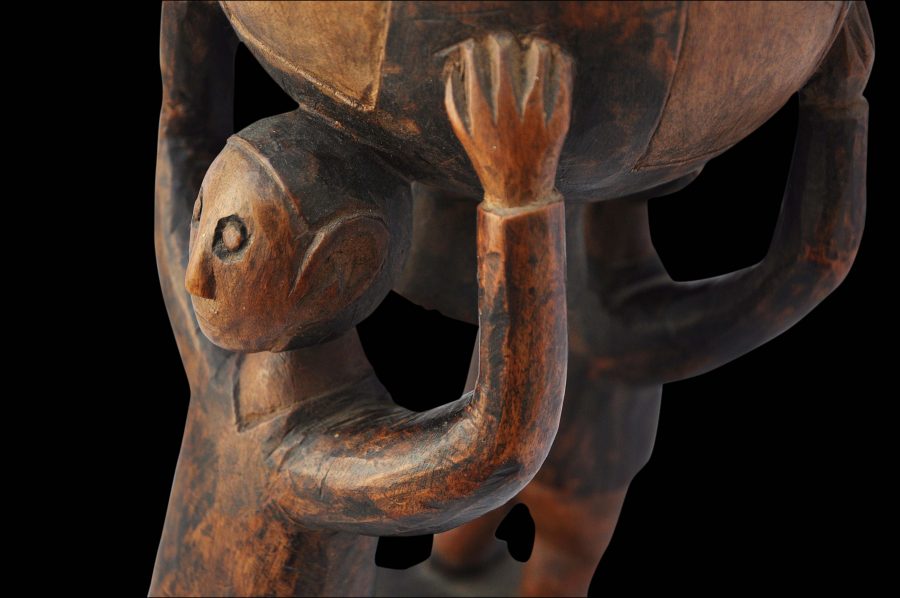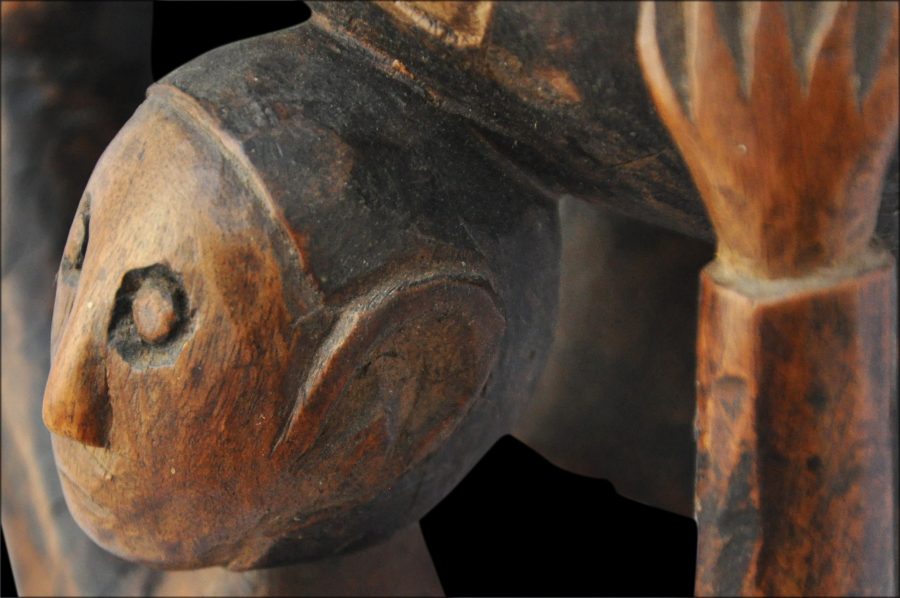The style of this bowl by the indigenous carver Muhlati mimics the form of indigenous terracotta pots but with the addition of the flared circular base beneath the bowl.
The two figures are carved and coloured so that they have shoes, trousers and a shirt – attire that was a requirement of the indigenous people for when they visited the colonial towns of the Cape and the Natal colonies. They stand with their legs slightly bent, with elongated arms raised above their heads grasping the bowl firmly. They look out, in opposite directions to the viewer such that there is no definable back or front to the bowl.
The bowl is coloured in alternating dark and plain bands. The dark, as elsewhere on the piece, has been achieved via scorching. The bowl narrows as it nears the opening and there is an engraved band of cross-hatching, which is mirrored on the edges of the base of the piece.
A small but well-defined crucifix has been impressed into one side of the bowl suggesting that this bowl was meant for or was used as a liturgical piece, possibly as a Holy Communion chalice. It was not unusual for ‘native’ wooden bowls and cups to serve as chalices (see Thiel and Helf, 1984 for examples.) Also, Muhlati did seek inspiration from religious items and themes for his carving work, items that were found in the Portuguese Catholic churches of Mozambique.
An almost identical bowl other than for the two carved figures facing different directions is in the Terence Pethica Collection and illustrated in Klopperet al (2007, p. 130-1). Another item by Muhlati are illustrated in Stevenson, & Graham-Stewart, 2003.
The carver Muhlati was a sculptor who lived in Lourenco Marques, now known as Maputo, the capital city of Mozambique, towards the end of the nineteenth century. He was a member of the Tsonga or Shangaan ethnic group, one of the largest in Mozambique.
He became well known as a sculptor who could carve a wide variety of figures and accordingly commanded high prices. His work is distinctive and characterised by his use of blonde wood, and figures with incised circular eyes; circular ears with an interior triangular form; slit mouths; simple fingers formed by almost parallel grooves, and a running motif of cross-hatching often on the base of the piece (Stevenson, & Graham-Stewart, 2003). All these characteristics are present n this piece.
An almost identical example comprised lot 39 in Lyon & Turnbull’s ‘Classical Ancient Art – Form Through Time’ auction of Match 21, 2024. It sold for £15,000 (US$19,000) plus commission.
Our example was acquired in the UK and almost certainly has been in the UK since the colonial era. It has an excellent patina. There is some light but closed age-related cracking to the bowl, a chip to the base and a previous owner has lightly waxed the piece, but overall, the piece is in very good condition given its age and medium. It is a striking and very decorative piece from a sought after and celebrated indigenous carver.
References
Stevenson, M., & M. Graham-Stewart, The Mlungu in Africa: Art from the Colonial Period, 1840-1940, 2003.
Klopper, S. et al, The Art of Southern Africa: The Terence Pethica Collection, 5 Continents, 2007.


